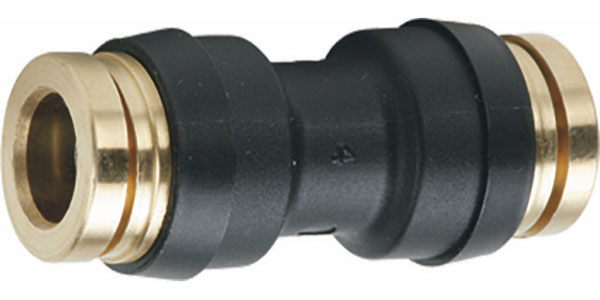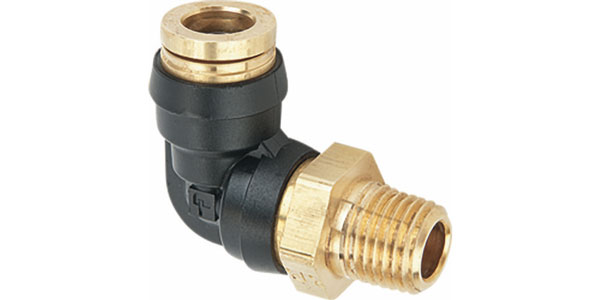There are many applications for Department of Transportation (DOT)-approved fittings on trucks and trailers, but the most common is for air brake lines and transmissions. While both approved push-to-connect and compression fittings may be used, the benefits of push-to-connect fittings outweigh the use of lower-cost compression fittings. Lawson Products suggests considering these factors when choosing between DOT-approved push-to-connect or compression fittings.
- DOT-approved push-to-connect air brake fittings are compact and better suited for installing in confined areas. Compression fittings must be installed with tools, where push-to-connect fittings are installed and removed by using tools only on the pipe thread ends, not the tube ends, saving time and reducing the possibility of causing damage to surrounding components or equipment.
- Leak-free seals are easily achieved using DOT-approved push-to-connect air brake fittings by easily pushing the fitting onto the tube or hose. The nut on a compression fitting must be turned to specifically rated torque to ensure the proper seal, whereas push-to-connect fittings do not have a compression nut.
- Push-to-connect fittings rarely require adjusting after installation to be leak free, whereas compression fittings often need to be retightened to stop a leak. This can cause crimping or distortion of the tube, increasing the chance of future leaks.

DOT push-to-connect air brake fittings are made to be easy to assemble and disassemble, with no tools or skills required. They may be used for all air brake applications except those designed for use between frame and axle or between towed and towing vehicles.
Different materials
There are two types of push-to-connect fittings: brass and composite.
Brass body
Brass body fittings are an advancement from the trusted brass compression fitting, introduced in the early 1990s as a way to reduce fitting assembly time and complexity, while maintaining all of the other performance benefits of brass compression fittings.
Brass push-to-connect fittings don’t rust, corrode or become brittle in cold temperatures.
The collet and O-ring seal design allows for a relatively leak-free assembly with no additional tools.
The biggest benefit of brass push-to-connect fittings is time and labor cost savings. Push-to-connect fittings can reduce assembly time up to 90%. This means a mechanic could assemble 900 push-to-connect fittings in one hour versus 90 compression fittings in one hour. Another way to look at it would be that this single person could make as many assembly connections as ten employees.
Composite
The evolution of push-to-connect fittings continued with the introduction of composite body fittings. These are manufactured with a polymer body and brass screw threads. This style of fitting retains all the labor-saving features of brass push-to-connect fittings, in a lighter-weight and lower-cost option when compared to brass push-to-connect fittings.
These fittings are popular due to their light weight and durable construction. The weight difference is significant enough to affect fuel efficiency and payload potential.
On average, composite push-to-connect fittings are about 43% lighter than brass push-to-connect. With approximately 60 to 100 DOT tube fittings used per truck, that equates to a weight savings of about 7 to 9 lbs. per vehicle. This adds up when dealing with a large fleet of vehicles.
This article was contributed by Jason Gatziolis, senior product manager at Lawson Products.














